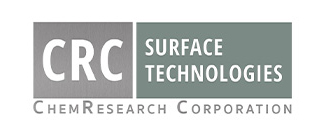
27 Jan What’s the Difference Between Cadmium and Zinc Nickel Plating?
Electroplating is crucial in enhancing the durability, corrosion resistance, and appearance of various substrates. There are many different plating metals to choose from, each improving the substrate in different ways. Zinc-nickel and cadmium are popular plating metals that offer many significant yet similar advantages. So how do you know when to choose zinc-nickel plating vs. cadmium for your manufacturing needs? Let’s explore the difference between zinc nickel and cadmium electroplating to help you select the right finish for the job.
The Difference Between Zinc-Nickel and Cadmium Plating
What Is Cadmium Plating?
The cadmium electroplating process applies a thin, metallic, silver-colored coating that offers superior protection from the elements. As a “sacrificial coating,” cadmium plating slowly corrodes over time, while protecting the metal substrate underneath from corrosion and other types of wear. Cadmium plating can be used on a variety of base metals, including aluminum, brass, copper, iron, and steel.
Cadmium Applications and Benefits
There are many impressive benefits of cadmium electroplating that can significantly improve the quality of the base metal. For instance, cadmium plating provides:
- Exceptional corrosion resistance
- Increased lubricity
- Better chemical resistance
- Excellent solderability
- Improved ductility
- High electrical conductivity
These advantages make cadmium a desirable coating for applications spanning a wide range of industries. For example, its built-in lubricity helps prevent machine parts from galling, and its high conductivity and solderability make it useful in the electronics industry.
Cadmium is highly resistant to corrosion from salt water, so it’s an ideal coating for parts used in the aerospace and defense industries. Its superior corrosion resistance is also important in the automotive industry.
Zinc Nickel as a Safe Alternative to Cadmium
Despite its many benefits, cadmium can be extremely dangerous unless it’s handled properly. In fact, cadmium has been banned by the European Union and heavily limited to certain applications in the United States. Currently, cadmium can only be used in the U.S. as a plating metal for the aerospace and defense industries.
However, zinc-nickel plating is an environmentally safe alternative that offers many of the same advantages as cadmium. Zinc-nickel plating has been recently approved as a substitute for cadmium landing gears.
Zinc-nickel electroplating provides a protective, sacrificial coating, just like cadmium. It also offers excellent corrosion resistance and ductility. However, a major difference between the two plating metals is that zinc-nickel has high hardness and is resistant to high temperatures, while cadmium is soft and not as heat-resistant.
Because zinc-nickel plating and cadmium are so similar, they have applications in many of the same industries, such as aerospace and defense. Zinc-nickel plating is ideal for landing gears, bushings, and actuators.
Cadmium and Zinc-Nickel Plating in Phoenix, Arizona
Whether you’re interested in cadmium plating or you are looking for a safer alternative, CRC Surface Technologies can help. We offer cadmium plating, zinc-nickel plating, and over thirty other metal plating solutions to regional and national machine shops.
As an ITAR-registered and NADCAP-Certified company, you can trust that our services are safe and reliable. Call us at 602-253-4175 today or send an email to rfq@chemresearchco.com to request a quote.
Images used under creative commons license – commercial use (1/27/2023). Photo by Etienne Jong on Unsplash

